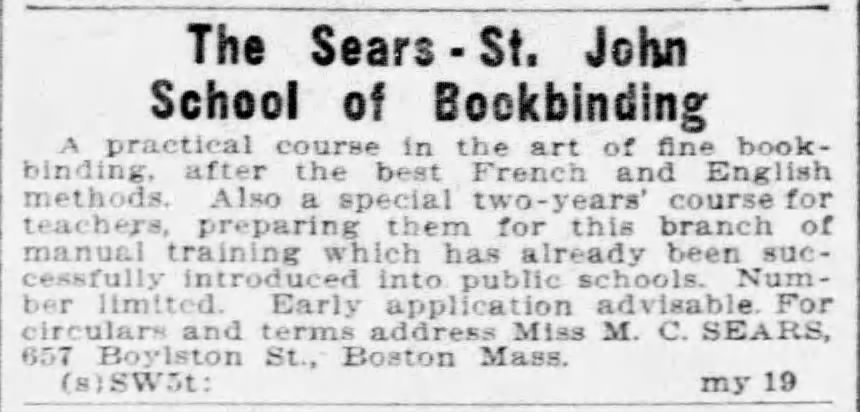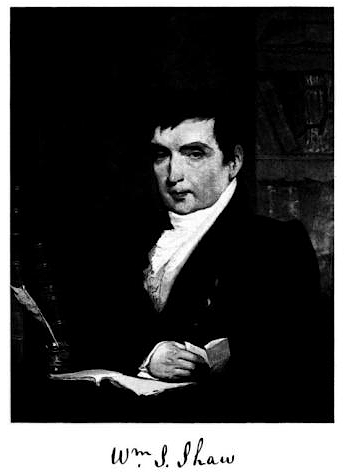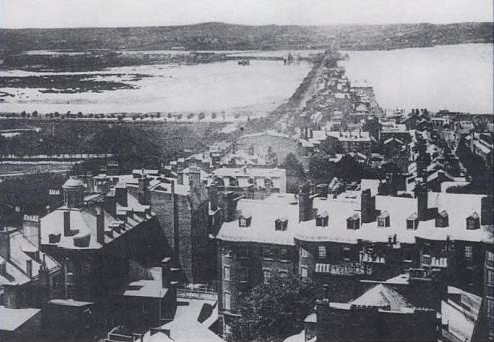|
Rosamond B. Loring
Rosamond Bowditch Loring (May 2, 1889 – September 17, 1950) was an author, bookbinder, and creator, collector and historian of decorated papers. She was active in publishing circles as well as craft organizations. Her collection of historic and modern papers, now housed at Harvard University, is still used by librarians, book publishers, collectors, and researchers. Education in craft Loring studied bookbinding at the Sears School of Bookbinding in Boston's Back Bay. Having difficulty finding high quality decorated paper for use in binding, she turned to making her own, setting up a studio on the top floor of her home and experimenting based on a scrap of information about paste paper gleaned from Joseph Zaehnsdorf's ''The Art of Bookbinding''. She later said, "It sounded so simple, until it came to making them". As she gained experience, she shared her knowledge by lecturing and demonstrating the craft. At one demonstration of marbling in 1928, an observer said, "I like what y ... [...More Info...] [...Related Items...] OR: [Wikipedia] [Google] [Baidu] |
Harvard University
Harvard University is a private Ivy League research university in Cambridge, Massachusetts. Founded in 1636 as Harvard College and named for its first benefactor, the Puritan clergyman John Harvard, it is the oldest institution of higher learning in the United States and one of the most prestigious and highly ranked universities in the world. The university is composed of ten academic faculties plus Harvard Radcliffe Institute. The Faculty of Arts and Sciences offers study in a wide range of undergraduate and graduate academic disciplines, and other faculties offer only graduate degrees, including professional degrees. Harvard has three main campuses: the Cambridge campus centered on Harvard Yard; an adjoining campus immediately across Charles River in the Allston neighborhood of Boston; and the medical campus in Boston's Longwood Medical Area. Harvard's endowment is valued at $50.9 billion, making it the wealthiest academic institution in the world. Endowment inco ... [...More Info...] [...Related Items...] OR: [Wikipedia] [Google] [Baidu] |
The Society Of Arts And Crafts Of Boston
The Society of Arts and Crafts is one of America's oldest arts and craft nonprofit organization. The Society moved to Boston's Seaport District in 2016 after being located on Newbury Street for over 40 years. The Society was incorporated by twenty-one individuals on June 28, 1897, and was then known as the Society of Arts and Crafts in Boston. The small group was representational of Boston's elites in the fields of teaching, art-making, architecture, and craft. The original Society began with the agreement to "develop and encourage higher artistic standards in the handcrafts." Frederic Allen Whiting was the Director at the Society until 1912, when Humphery J. Emery took over. He would serve on the board of directors until the 1930s. Mission The Society's mission is to support and celebrate craft makers and their creativity. Through its various programs, the organization strives to inspire the creation, assemblage, and promotion of the work of contemporary craft makers. The adva ... [...More Info...] [...Related Items...] OR: [Wikipedia] [Google] [Baidu] |
Walter Muir Whitehill
Walter Muir Whitehill (1905 – 1978) was an American writer, historian, medievalist, and the Director and Librarian of the Boston Athenaeum from 1946 to 1973.Current biography yearbook H.W. Wilson Company - 1961 "The only child of the Reverend Walter Muir Whitehill, an Episcopal clergyman, and Florence Marion (Williams) Whitehill, a painter, Walter Muir Whitehill was born in Cambridge, Massachusetts on September 28, 1905. His first experience with " He was also editor for publications of the Colonial Society of Massachusetts from 1946 to 1978. From 1951 to 1972 Whitehill was a professor at Harvard University. Whitehill's father of the same name was an Episcopalian minister. The younger Whitehill received his AB and AM degrees from Harvard in 1926 and 1929. Shortly after this he married Jane Revere Coolidge, a descendant of Thomas Jefferson and eldest daughter of Julian Coolidge. He then went to England where he received a Ph.D. from the University of London. In 1932 he did in Sa ... [...More Info...] [...Related Items...] OR: [Wikipedia] [Google] [Baidu] |
Finding Aid
A finding aid, in the context of archival science, is an organization tool, a document containing detailed, indexed, and processed metadata and other information about a specific collection of records within an archive. Finding aids often consist of a documentary inventory and description of the materials, their source, and their structure. The finding aid for a fonds is usually compiled by the collection's entity of origin, provenance, or by an archivist during archival processing, and may be considered the archival science equivalent of a library catalog or a museum collection catalog. The finding aid serves the purpose of locating specific information within the collection. The finding aid can also help the archival repository manage their materials and resources. The history of finding aids mirrors the history of information. Ancient Sumerians had their own systems of indexes to locate bureaucratic and administrative records. Finding aids in the 19th and 20th centuries were pap ... [...More Info...] [...Related Items...] OR: [Wikipedia] [Google] [Baidu] |
Houghton Library
Houghton Library, on the south side of Harvard Yard adjacent to Widener Library, is Harvard University's primary repository for rare books and manuscripts. It is part of the Harvard College Library, the library system of Harvard's Faculty of Arts and Sciences. History Harvard's first special collections library began as the Treasure Room of Gore Hall in 1908. The Treasure Room moved to the newly built Widener Library in 1915. In 1938, looking to supply Harvard's most valuable holdings with more space and improved storage conditions, Harvard College Librarian Keyes DeWitt Metcalf made a series of proposals which eventually led to the creation of Houghton Library, Lamont Library, and the New England Deposit Library. Funding for Houghton was raised privately, with the largest portion coming from Arthur A. Houghton Jr., in the form of stock in Corning Glass Works. Construction was largely completed by the fall of 1941, and the library opened on February 28, 1942. Along with m ... [...More Info...] [...Related Items...] OR: [Wikipedia] [Google] [Baidu] |
Boston Athenæum
The Boston Athenaeum is one of the oldest independent libraries in the United States. It is also one of a number of subscription library, membership libraries, for which patrons pay a yearly subscription fee to use Athenaeum services. The institution was founded in 1807 by the Anthology Club of Boston, Massachusetts. It is located at 10 1/2 Beacon Street on Beacon Hill, Boston, Beacon Hill. Resources of the Boston Athenaeum include a large circulating book collection; a public gallery; a rare books collection of over 100,000 volumes; an art collection of 100,000 paintings, sculptures, prints, drawings, photographs, and decorative arts; research collections including one of the world's most important collections of primary materials on the American Civil War; and a public forum offering lectures, readings, concerts, and other events. Special treasures include the largest portion of President George Washington, George Washington's library from Mount Vernon; Jean-Antoine Houdon, Ho ... [...More Info...] [...Related Items...] OR: [Wikipedia] [Google] [Baidu] |
Back Bay, Boston
Back Bay is an officially recognized neighborhood of Boston, Massachusetts, built on reclaimed land in the Charles River basin. Construction began in 1859, as the demand for luxury housing exceeded the availability in the city at the time, and the area was fully built by around 1900. It is most famous for its rows of Victorian brownstone homes—considered one of the best preserved examples of 19th-century urban design in the United States—as well as numerous architecturally significant individual buildings, and cultural institutions such as the Boston Public Library, and Boston Architectural College. Initially conceived as a residential-only area, commercial buildings were permitted from around 1890, and Back Bay now features many office buildings, including the John Hancock Tower, Boston's tallest skyscraper. It is also considered a fashionable shopping destination (especially Newbury and Boylston Streets, and the adjacent Prudential Center and Copley Place malls) and home to ... [...More Info...] [...Related Items...] OR: [Wikipedia] [Google] [Baidu] |
North Shore, Massachusetts
The North Shore is a region in the U.S. state of Massachusetts, loosely defined as the coastal area between Boston and New Hampshire. The region is made up both of a rocky coastline, dotted with marshes and wetlands, as well as several beaches and natural harbors. The North Shore is an important historical, cultural, and economic region of Massachusetts. The southern part of the region includes several of Boston's densely populated inner suburbs. At the center of the North Shore lies its most prominent geographic feature, Cape Ann, with numerous small fishing towns, and at the northern end lies the Merrimack Valley, which was a major locus of the Industrial Revolution in the United States. It contains the cities of Salem, known worldwide as the site of the Salem witch trials; and Gloucester, site of Charles Olson's ''The Maximus Poems'', and of Sebastian Junger's 1997 creative nonfiction book '' The Perfect Storm'' and its 2000 film adaptation. Beverly was home to author Joh ... [...More Info...] [...Related Items...] OR: [Wikipedia] [Google] [Baidu] |
Prides Crossing
Prides Crossing is a neighborhood of the city of Beverly, Massachusetts in the North Shore region. It is bordered to the east by Beverly Farms, and to the west by the Beverly Cove areas of Beverly. History The name is associated with John Pride – supposedly a nephew of Thomas Pride – who was granted land in the area in 1636. In the late 1800s and early 1900s grand mansions were built as summer "cottages' for wealthy business magnates. Henry Clay Frick, who made his fortune in steel (Carnegie Steel) was among the best known of these summer residents. He built "Eagle Rock", located between Hale Street and the Atlantic Ocean. Edward Carelton Swift, at one time the owner of the largest meat packing operation in the U.S. built a mansion, "Swiftmoor" on Paine Avenue in Prides Crossing. Eleonora "Eleo" Sears, a flamboyant female socialite and world class tennis player, owned a residence that still exists where Paine Avenue and West Beach meet. Wealthy residents were known to ... [...More Info...] [...Related Items...] OR: [Wikipedia] [Google] [Baidu] |
Jamaica Plain
Jamaica Plain is a neighborhood of in the City of Boston, Massachusetts, United States. Settled by Puritans seeking farmland to the south, it was originally part of the former Town of Roxbury, now also a part of the City of Boston. The community seceded from Roxbury as a part of the new town of West Roxbury in 1851, and became part of Boston when West Roxbury was annexed in 1874.Local Attachments : The Making of an American Urban Neighborhood, 1850 to 1920 (Creating the North American Landscape), by Alexander von Hoffman, The Johns Hopkins University Press (1996), In the 19th century, Jamaica Plain became one of the first streetcar suburbs in America and home to a significant portion of Boston's Emerald Necklace of parks, designed by Frederick Law Olmsted. In 2020, Jamaica Plain had a population of 41,012 according to the United States Census. History Colonial era Shortly after the founding of Boston and Roxbury in 1630, William Heath's family and three others settled o ... [...More Info...] [...Related Items...] OR: [Wikipedia] [Google] [Baidu] |
Nathaniel Bowditch
Nathaniel Bowditch (March 26, 1773 – March 16, 1838) was an early American mathematician remembered for his work on ocean navigation. He is often credited as the founder of modern maritime navigation; his book '' The New American Practical Navigator'', first published in 1802, is still carried on board every commissioned U.S. Naval vessel. In 2001, an elementary and middle school in Salem was named in his honor. Life and work Nathaniel Bowditch, the fourth of seven children, was born in Salem, Province of Massachusetts Bay, to Habakkuk Bowditch, a cooper who at one point was a sailor as well but stopped after his ship went aground in 1775, and Mary Ingersoll Bowditch. At the age of ten, he was made to leave school to work in his father's cooperage, before becoming indentured at twelve for nine years as a bookkeeping apprentice to a ship chandler. Here is where he first learned bookkeeping, an important step in his life. In 1786, age fourteen, Bowditch began to study alg ... [...More Info...] [...Related Items...] OR: [Wikipedia] [Google] [Baidu] |
Hroswitha Club
The Hroswitha Club was a membership-based club of women bibliophiles and collectors based in New York City, active from 1944 to 2004. Founding The Hroswitha Club was founded in 1944 by a group of women bibliophiles: Sarah Gildersleeve Fife (who convened the group), Belle da Costa Greene, Anne Lyon Haight, Ruth S. Granniss, Eleanor Cross Marquand, Henrietta C. Bartlett and Rachel McMasters Miller Hunt. It was named in honor of Hrotsvitha of Gandersheim, a 10th-century German secular canoness, dramatist and poet. At the time of the Club's founding, women bibliophiles were not allowed membership in many premier bibliographic societies such as the Grolier Club, the oldest existing bibliophilic club in North America, or the Caxton Club. (This policy remained in place at both the Grolier and Caxton Clubs until 1976.) The first meeting of the Hroswitha Club was held on November 16, 1944, at the Cosmopolitan Club. It held regular meetings four to five times a year at multiple location ... [...More Info...] [...Related Items...] OR: [Wikipedia] [Google] [Baidu] |








